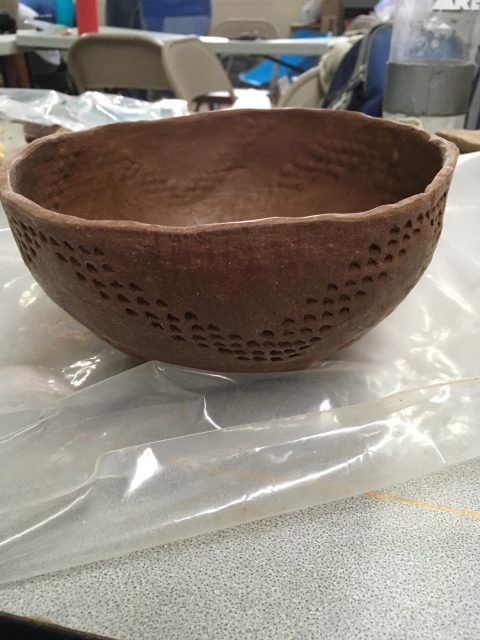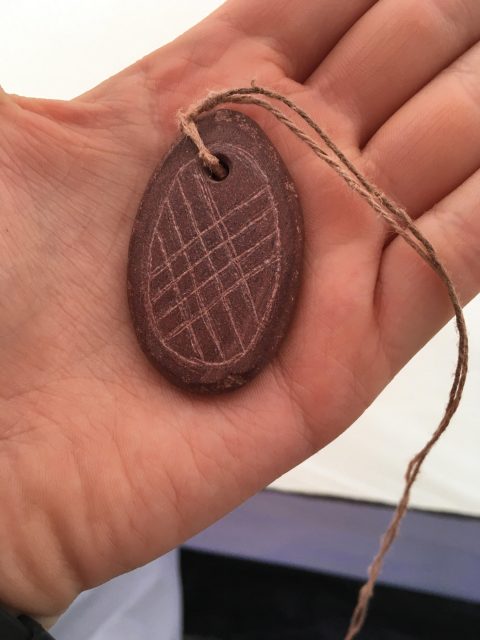- Home
- >
- Preservation Archaeology Blog
- >
- Lost Art
(June 23, 2017)—Patience is a virtue that few possess. In a day of here and now, “instant” is our battle cry. With high-speed internet, fast cars, and microwaveable meals we have entrenched ourselves in a state of easy access. As the trend has moved this way, the art or the ability to execute patience is beginning to be lost. This realization, that patience is not being exercised, has occurred to me numerous times during my field school experience.
This first of such instances happened as I attempted to create a bowl from a mound of clay. As the mound sat in front of me I had a clear picture of what I wanted the end result to look like, and with that in mind I dove in. Thirty or so minutes into the creation process, all I had accomplished was making my little mound of clay irrevocably misshapen into another less attractive mound of clay, the desired bowl shape nowhere near attained. Thinking my thirty-minute attempt was an adequate amount of time dedicated to complete such a project, I was ready to give up and move on.
Another instance comes from an activity in which I again attempted to create something, this time a stone pendant. Once again, I had the general idea of what I wanted to create, so I set about making it a reality. I achieved the shape I had in mind, so I set about drilling a hole for the string. Thirty minutes, forty, an hour and a half later my drilling had not made a hole all the way through the rock. Disheartened I considered giving up; an hour and a half was a good amount of time to try and accomplish such a task and seeing as I was getting nowhere it was time to move on.
In both of these instances, I was convinced that I’d given the adequate amount of time and effort to each project in order to complete them. As I sat there, ready to give up and just order a bowl and pendant from Amazon, I began to consider the people we have been studying and the artifacts we have uncovered. Each potsherd, flake, pendant, and tool is a testment to the amount of time and patience put into each artifact. I am sure feelings of frustration, defeat, and inadequacy passed through the creators’ minds at some point. But with each motion the task at hand was nearer to completion. With this new image in my mind—no longer the image of the products I wanted to create, but the attitude and feeling I wanted to foster—I set out to finish my bowl and pendant.
What I learned from completing these projects was the power of persevering with patience, that there is so much more to gain from the process than a not-half-bad pot and pendant. I have gained the perspective of hard-earned, long hours of work and creation. Not the self-satisfying immediacy that I have sadly become accustomed to. I have become more connected with the process than the material results. We should not only learn about the people we study but endeavor to learn from them. Patience may become a lost art, but archaeology is all about rediscovering the past. As we learn from those who have come before we can better cultivate an attitude to face the future.
Explore the News
-
Join Today
Keep up with the latest discoveries in southwestern archaeology. Join today, and receive Archaeology Southwest Magazine, among other member benefits.

